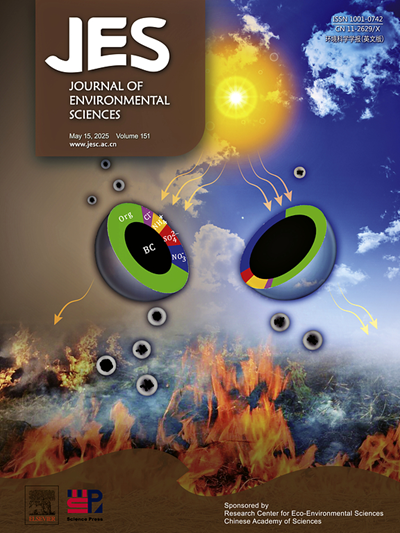Investigation on the thermal activation of peroxydisulfate by using the hydrodynamic cavitation: A case study on tetracycline degradation
IF 5.9
2区 环境科学与生态学
Q1 ENVIRONMENTAL SCIENCES
引用次数: 0
Abstract
The synergetic technology of hydrodynamic cavitation (HC) and peroxydisulfate (PDS) has been adopted for the treatment of organic pollutants, while the rationale behind the thermal-activation of PDS in this process remains lacking. This paper presented investigation on the degradation of tetracycline under two types of operating conditions, including “internal reaction conditions” (pH value and TC/PDS molar ratio) and “external physical conditions” (hole shape, solution temperature and inlet pressure). Special emphasis was paid on the analysis of thermal effects through a robust modeling approach. The results showed that a synergy index of 6.26 and a degradation rate of 56.71 % could be obtained by the HC-PDS process, respectively, when the reaction conditions were optimized. Quenching experiment revealed that •OH and •SO4- were the predominant free radicals and their contribution to the degradation was 75.4 % and 24.6 % respectively, since a part of •SO4- was transformed into •OH in the solution. The thermal activation of PDS mainly occurred near the hole where the fitting temperature was around 340 K, while •OH was generated in the bubble collapse region downstream the hole, where the temperature was much higher and favorable for the cleavage of water molecular. The average temperature under different external physical conditions was in good consistence with the degradation rates. This research developed a useful method to effectively evaluate the activation extent of PDS by HC and could provide reliable guidance for further development of cavitational reactors to treat organic pollutants based on this hybrid approach.

水动力空化热活化过硫酸氢盐的研究——以四环素降解为例
水动力空化(HC)和过硫酸氢盐(PDS)协同处理有机污染物的技术已被采用,但PDS在该过程中的热活化原理尚不清楚。本文研究了在两种操作条件下四环素的降解,包括“内部反应条件”(pH值和TC/PDS摩尔比)和“外部物理条件”(孔形状、溶液温度和入口压力)。特别强调了通过鲁棒建模方法对热效应的分析。结果表明,优化反应条件后,HC-PDS工艺的协同指数为6.26,降解率为56.71%。淬灭实验表明,•OH和•SO4-是主要的自由基,它们对降解的贡献分别为75.4%和24.6%,因为一部分•SO4-在溶液中转化为•OH。PDS的热活化主要发生在孔附近,其拟合温度约为340 K,而•OH则在孔下游的气泡崩塌区产生,该区域温度更高,有利于水分子的裂解。不同外部物理条件下的平均温度与降解速率具有较好的一致性。本研究为有效评价HC对PDS的活化程度提供了一种有用的方法,可为进一步开发基于该混合方法的空化反应器处理有机污染物提供可靠的指导。
本文章由计算机程序翻译,如有差异,请以英文原文为准。
求助全文
约1分钟内获得全文
求助全文
来源期刊

Journal of Environmental Sciences-china
环境科学-环境科学
CiteScore
13.70
自引率
0.00%
发文量
6354
审稿时长
2.6 months
期刊介绍:
The Journal of Environmental Sciences is an international journal started in 1989. The journal is devoted to publish original, peer-reviewed research papers on main aspects of environmental sciences, such as environmental chemistry, environmental biology, ecology, geosciences and environmental physics. Appropriate subjects include basic and applied research on atmospheric, terrestrial and aquatic environments, pollution control and abatement technology, conservation of natural resources, environmental health and toxicology. Announcements of international environmental science meetings and other recent information are also included.
 求助内容:
求助内容: 应助结果提醒方式:
应助结果提醒方式:


